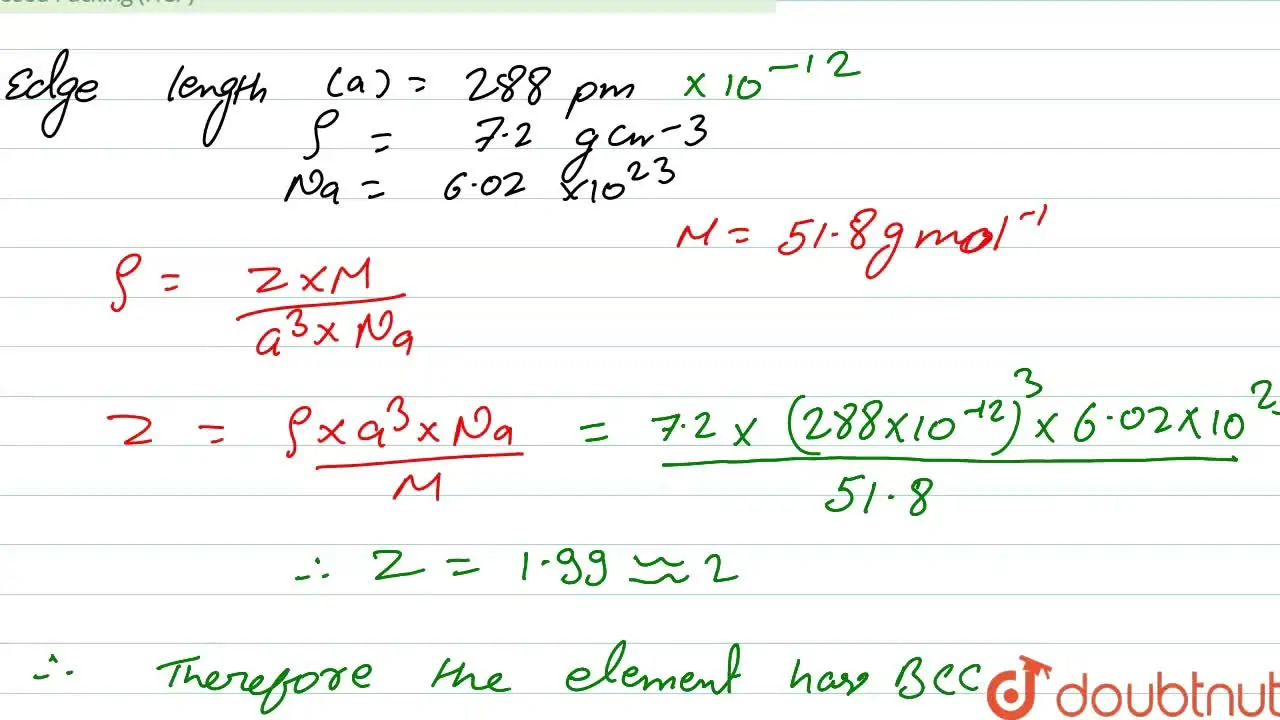An element with cell edge of 288 pm has a density of 7.2 g cm-3. What type of structure does the element have if it’s atomic mass M=51.8 g mol-1?
Body-Centred Cubic (BCC)
Face-Centred Cubic (FCC)
Simple Cubic
Hexagonal Closed Packing (HCP)
The correct Answer is:C
Step by step video & image solution for An element with cell edge of 288 pm has a density of 7.2 g cm-3. What type of structure does the element have if it’s atomic mass M=51.8 g mol-1? by Chemistry experts to help you in doubts & scoring excellent marks in Class 12 exams.
Related Playlists
Similar Questions
An element occurs in bcc structure with cell edge 288 pm. Its density is 7.2 g cm−3. Calculate the atomic mass of the element.
View SolutionAn element has a bcc structure with a cell edge of 288 pm. The density of the element is 7.2gcm−3. How many atoms are present in 208g of the element?
View SolutionAn element has a bcc structure with a cell edge of 288 pm. The density of the element is 7.2gcm−3. How many atoms are present in 208g of the element?
View SolutionIron has body centred cubic cell with a cell edge of 286.5 pm. The density of iron is 7.87 g cm−3. Use this information to calculate Avogadro's number. (Atomic mass of Fe = 56 mol−3)
View SolutionSilver has a cubic unit cell with a cell edge of 408 pm. Its density is 10.6 g cm−3. How many atoms of silver are there in the unit cell? What is the structure of silver?
View SolutionSilver has a cubic unit cell with a cell edge of 408 pm. Its density is 10.6 g cm−3. How many atoms of silver are there in the unit cell? What is the structure of silver?
View SolutionAn element exists in bcc lattice with a cell edge of 288 pm. Calculate its molar density is 7.2g/cm3
View SolutionAn element has a bcc structure with a celledge of 288 pm. The density of the element is 7.2gcm−3. How many atins are present in 208g of the element?
View SolutionAnelement has a body-centred cubic (bec) structure with cell edge of 288 pm. The density of the element is 7.2 g/cm3. How many atoms are present in 208 g of the element ?
View SolutionA bcc element (atomic mass 65) has cell edge of 420 pm. Calculate its density in gcm−3 .
View Solution


